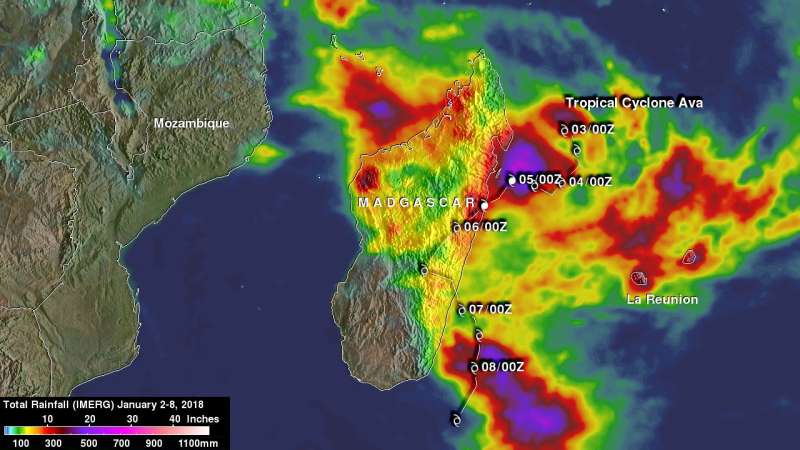IMERG measures Tropical Cyclone Ava's disastrous rainfall

Tropical cyclone Ava dropped extremely heavy rainfall over Madagascar as it passed over the eastern side of the island country on January 5 and 6, 2018. NASA calculated how much rainfall occurred using satellite data.
Ava's drenching rainfall caused flooding and landslides which resulted in the deaths of at least 29 people. An estimated 80,000 people on Madagascar were affected by the tropical cyclone.
A rainfall analysis using IMERG was produced at NASA's Goddard Space Flight Center in Greenbelt, Md. by accumulating rainfall that fell near Madagascar during the period from January 2 through 8, 2018.
IMERG means Integrated Multi-satellitE Retrievals for GPM. IMERG is used to estimate precipitation from a combination of passive microwave sensors, including the Global Precipitation Measurement (GPM) mission's core satellite's GMI microwave sensor and geostationary IR (infrared) data. IMERG real-time data are generated by NASA's Precipitation Processing System every half hour and are normally available within six hours.
NASA IMERG estimates showed the locations of extreme rainfall totals during the period when tropical cyclone Ava was in Madagascar's vicinity. The highest IMERG rainfall accumulation estimates of close to 700mm (27.6 inches) were shown for this period in the Indian Ocean northeast and southeast of Madagascar. The highest rainfall totals over land were indicated in northeastern Madagascar where Ava came ashore. High rainfall totals over land were also indicated by IMERG over northwestern Madagascar where the tropical cyclone caused an onshore flow from the Mozambique Channel.
IMERG data are calibrated with measurements from the GPM Core Observatory as well as rain gauge networks around the world. GPM is a joint mission between NASA and the Japanese space agency JAXA.
Ava has moved into the Indian Ocean south of Madagascar and cooler ocean waters. These environmental conditions are expected to cause Ava to rapidly dissipate.
Provided by NASA's Goddard Space Flight Center




















